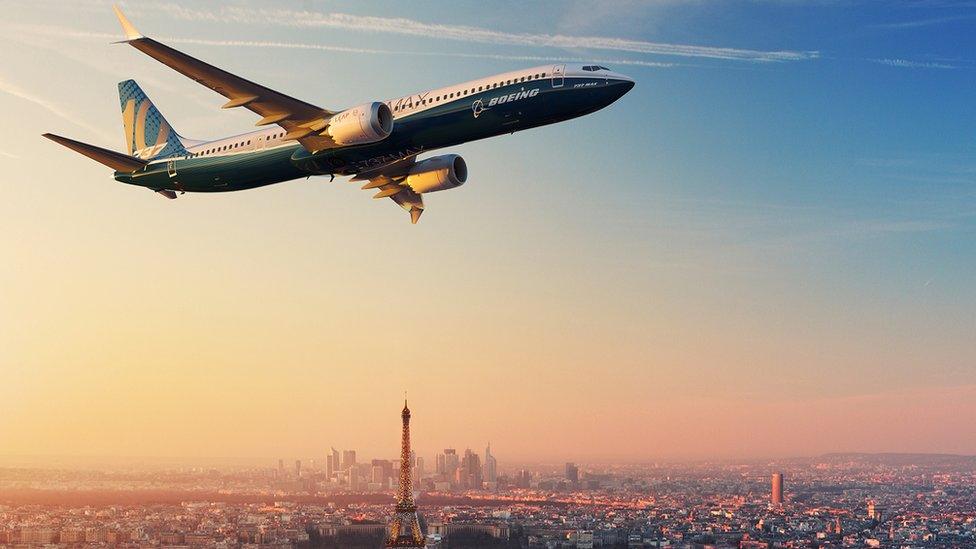Paris Airshow: eight takeaways from the major aerospace event
- Published
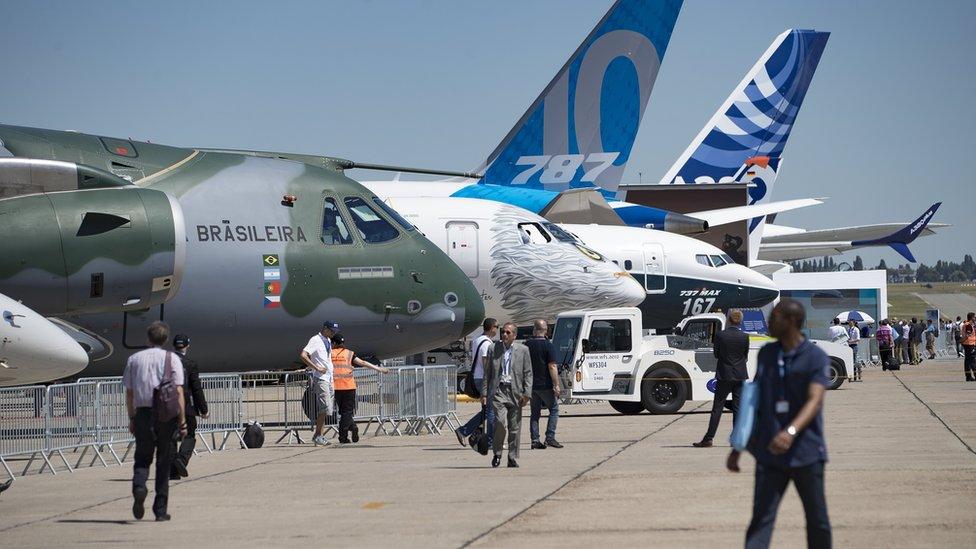
The Paris Airshow is taking place this week at a very hot Le Bourget airfield, a few miles from the centre of the city.
The event is held every other year - alternating with the Farnborough Airshow - and is a showcase for the world's biggest commercial aviation and defence companies - as well as some plucky upstarts that are not quite household names.
Deals worth tens of billions of dollars are done at the show as the hundreds of firms exhibiting their wares pull out all the stops to encourage the top brass from the world's air forces of the world to stop by, as well as wooing slightly less visible customers.
For a drone's eye video view of the show click here, external.
Here are eight things we learned from the 52nd Paris Airshow :
1. Supersonic air travel may return
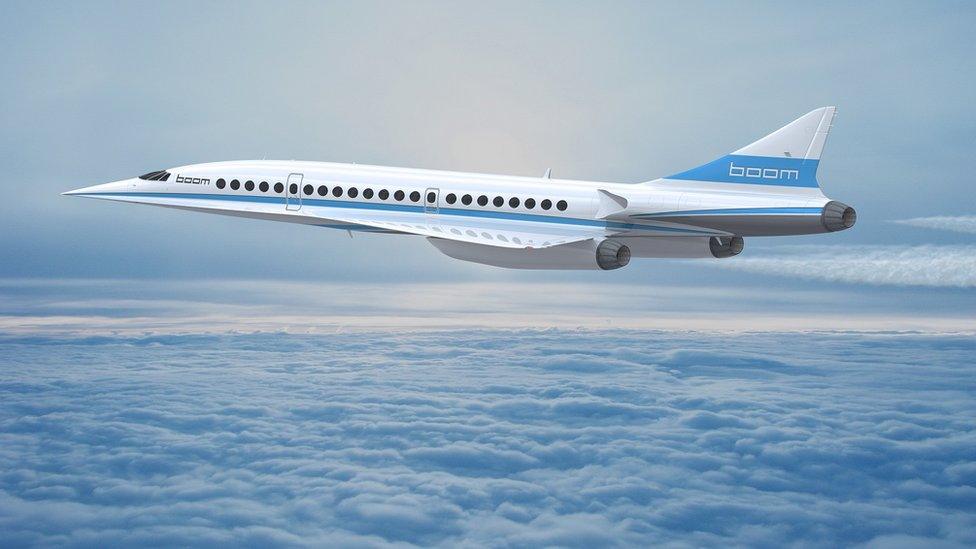
Boom wants to build a plane akin to Concorde but is economic to operate
Several companies are working on ventures that aim to replicate Concorde's ability to exceed the speed of sound, including Boom Supersonic. The US firm aims to fly a demonstrator by the end of 2018, with the first paying passengers taking to the skies in 2023 - if all goes to plan. That remains a big if, but founder Blake Scholl insists the venture will be "profitable for airlines and affordable for customers".
2. Cars can fly
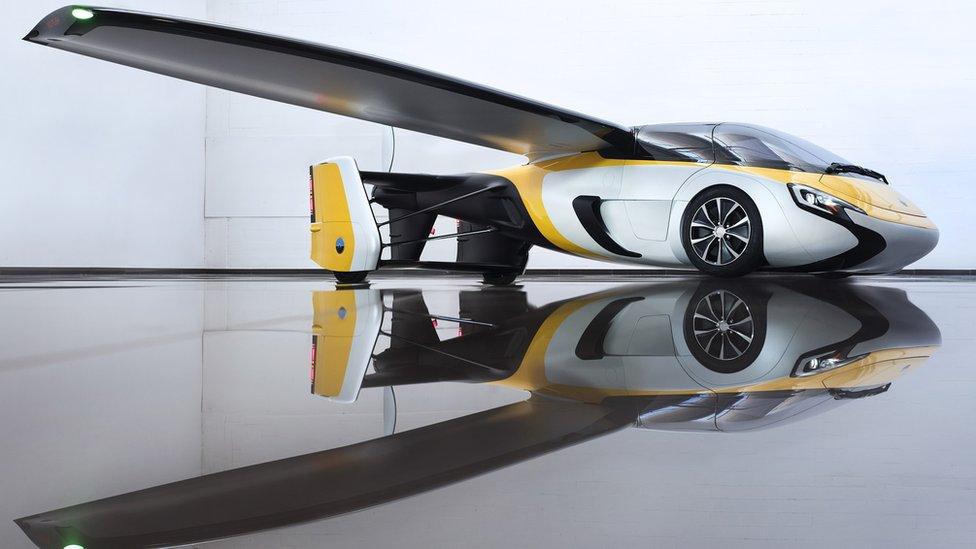
Slovakia's AeroMobil has its flying car on display. Not just a prototype, the vehicle can be converted into something that takes to the skies in just three minutes. But buyers will have be patient as well as have deep pockets: they can order one of the 500 that will be built as long as they have about $1.5m to spare, and can wait until 2020 for delivery.
But even Airbus - one of the world's biggest plane makers - is taking the idea seriously. Jean-Brice Dumont, chief engineer of Airbus helicopters, says the technology for "flying cars" exists, but legal and social barriers remain, and might be trickier to solve. He makes a bullish prediction: there will be flying cars in our garages within 20 years.
3. Plug and play
An all-electric light aircraft has been designed by the French aerospace research lab Onera. which has a one-fifth scale model on display at its stand. The four to six-passenger plane would be powered by 32 small electric fans each about 50cm in diameter mounted on the wings. Only problem? No manufacturer has yet said it wants to make it.
4. No wires, in high definition

In-flight entertainment systems are getting smarter and better. Thales, for example, is giving the latest version of its system capabilities such as wireless headphones, voice control and 4K high definition screens, as well as making it easier to use. Meanwhile, Panasonic has been showing off technology that allows passengers to select movies before and during a flight via the airline's app on their smartphone. The ability to order food and drinks, or control the lighting over their seat, can also be added.
5. Boeing vs Airbus
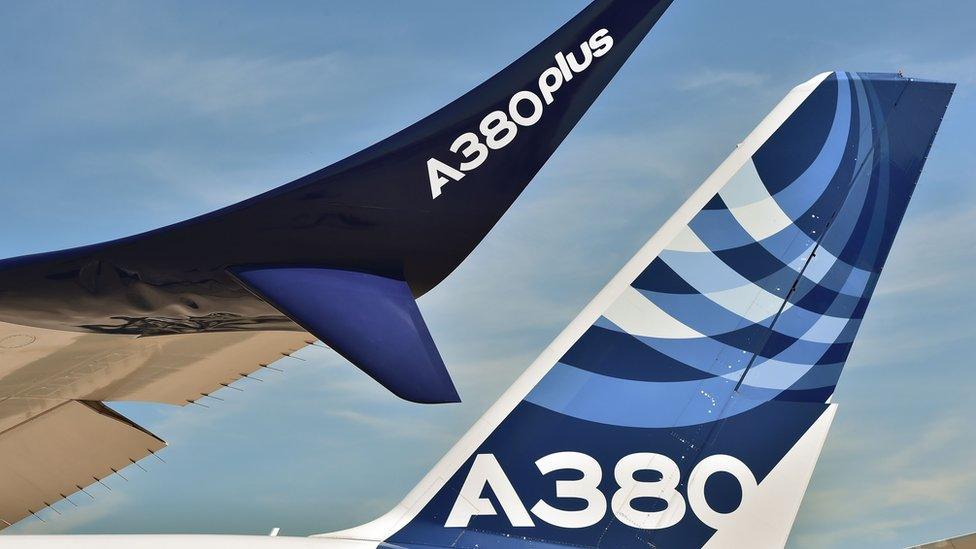
An air show wouldn't be an air show without an announcement from the world's two biggest plane makers. Despite being on home turf, Airbus could only manage adding some wingtips to the A380 in a fairly desperate bid to drum up orders for the superjumbo, which have totalled precisely zero for more than 12 months. In a bid to cut operating costs for airlines, Airbus has also squeezed in another 80 seats, meaning a typical layout on the A380plus would be 575 seats.
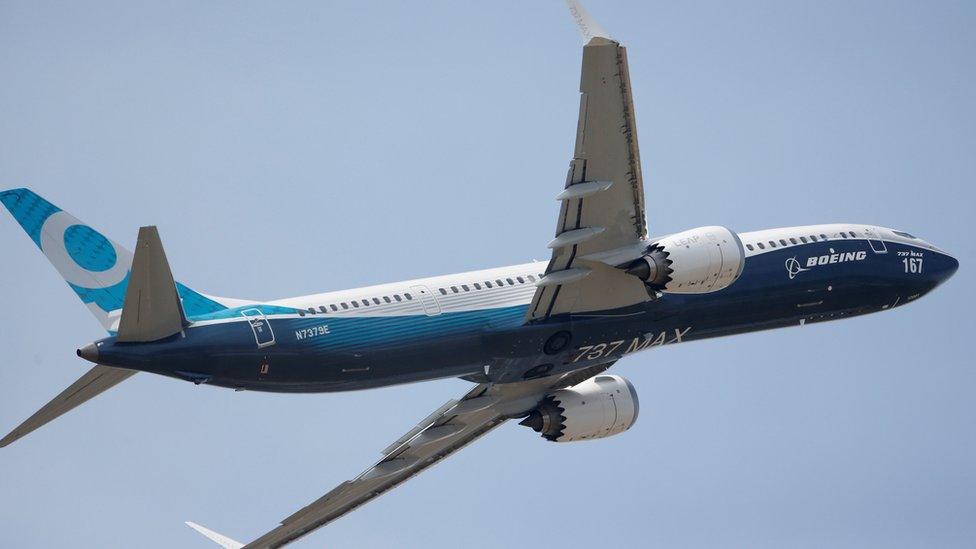
Boeing displayed the 737 Max 9 and announced a new model that is 66 inches longer, the Max 10
Airbus has had more luck with the new versions of its short-haul A320 family, which has proved more popular with airlines. Meanwhile, Boeing announced a slightly longer model of the 737 called the Max 10. It can carry about 230 passengers, closer to 240 who can be packed into an A321neo - that capacity is one reason why Airbus has been winning the orders war at this end of the market at least.
6. The private jet is alive and well
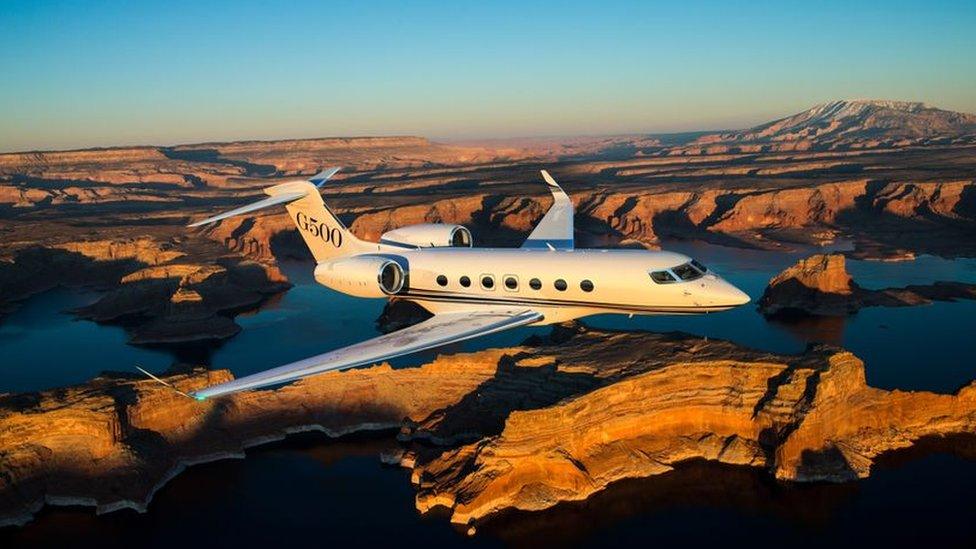
While it may not be fashionable in certain circles for the super-wealthy to flash their cash, Gulfstream says deliveries to Europe have risen by 25% over the past five years to 230 planes. The General Dynamics-owned firm was at Le Bourget to let potential buyers evaluate its new G500 jet, which is still being certified by regulators. The plane can fly up to 5,000 nautical miles (9,260km) - London to Beijing or Los Angeles - at a speed of 0.85 Mach, which is comparatively quick compared with its rivals. When time is money, these things matter.
While you may think that charter or "fractional" operators such as NetJets or FlexJet are reducing the need for companies or individuals to buy a plane, a Gulfstream spokeswoman says these operators often act as a "stepping stone" to help customers determine whether they need (or simply want) their own aircraft.
7. Where dead planes go to die (or have a rest)
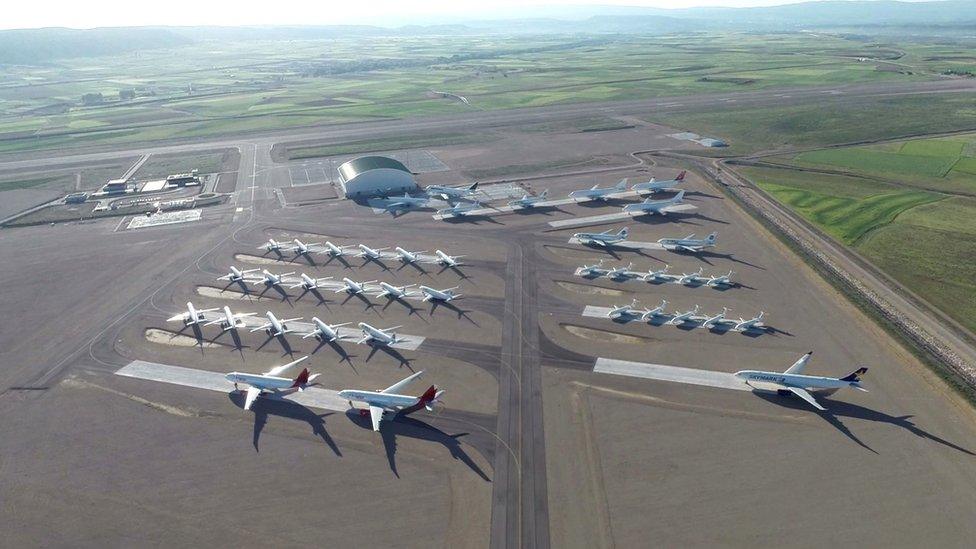
Tarmac Aerosave calls itself Europe's leading aircraft storage and recycling company. The firm has now recycled 100 commercial planes and 85 engines since it was set up a decade ago.
It has 100 aircraft in storage at Tarbes, France, where the company will open a second hangar at the end of the year to meet demand. It also has another facility in Teruel, Spain.
Sometimes planes need to go on holiday too, it seems.
8. Jet fighters are very, very loud
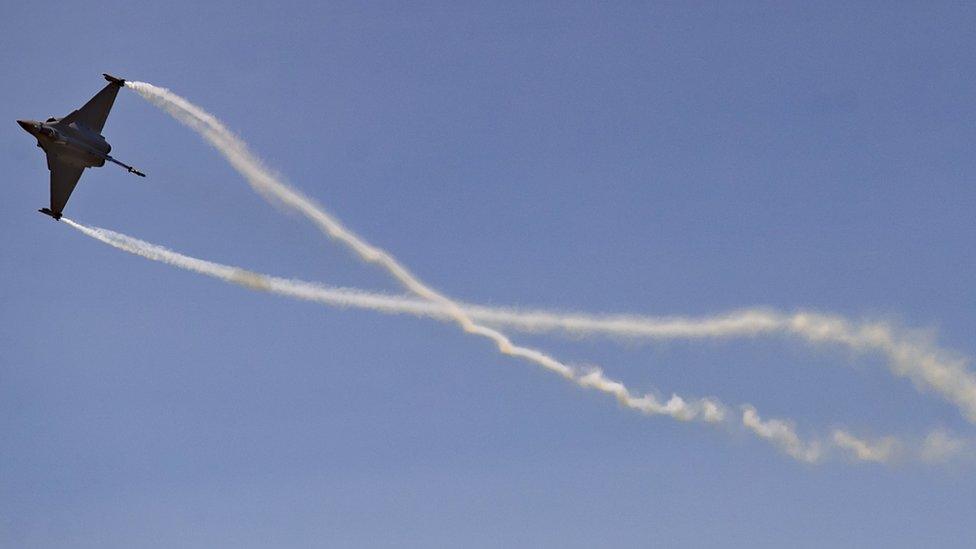
A Dassault Rafale fighter jet is put through its paces at the Paris air show
The Dassault Rafale fighter jet was one of the many defence aircraft that wowed the show with daring manoeuvres, along with the Lockheed Martin F35.
Some slightly less nimble planes also took to the skies such as the Airbus A400M, which is frankly a lot more useful than a fighter jet if you have a tank or two to transport.
- Published16 June 2017
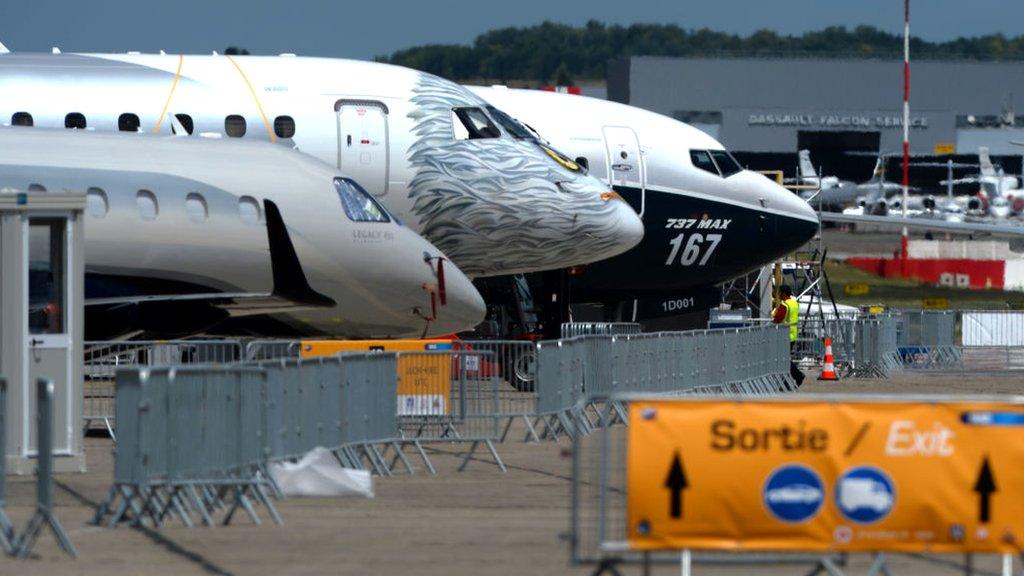
- Published18 June 2017
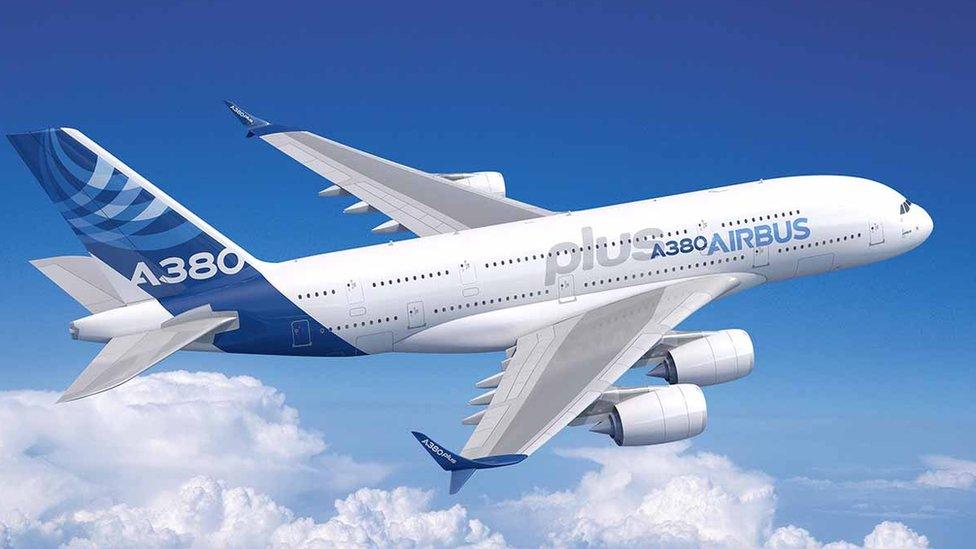
- Published19 June 2017
